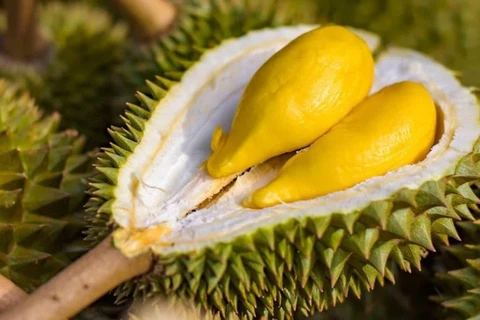
Hanoi (VNA) - Vietnam's tourism industry is set to emphasise professionalism, enhance regional collaboration, integrate with other sectors in the development chain, and especially create unique products tied to local cultural heritage.
Minister of Culture, Sports and Tourism Nguyen Van Hung highlighted that the sector will soon prioritise green and sustainable development, placing the visitors’ experience at the centre. The goal is to align tourism growth with the preservation of heritage and national cultural identity.
Recent efforts to revitalise the industry post-pandemic have successfully restored its growth to pre-pandemic levels, making it a bright spot in the country’s socioeconomic landscape.
In 2023, Vietnam welcomed 12.5 million international visitors, surpassing the target of 8 million. Domestic tourism also exceeded expectations with an estimated 108 million visits, 5.8% above the annual plan. Tourism revenue reached approximately 672 trillion VND (27.25 billion USD), surpassing the target by 3.38%.
In the first seven months of 2024, the nation attracted nearly 10 million foreign arrivals, an annual increase of 51% and a 1.9% rise compared to 2019, the year before the outbreak of the COVID-19 pandemic. Domestic visitor number, meanwhile, was estimated at around 79.5 million, with total tourism revenue projected to exceed 513 trillion VND.
Vietnam was awarded Asia’s leading destination and leading natural destination titles by the World Travel Awards (WTA) last year, marking the fifth time it has been recognised as a top destination in the region and underscoring its growing appeal.
Minister Hung attributed these achievements to a combination of factors, including the support from the Party and State, as well as active involvement from ministries and localities in managing and investing in infrastructure and effective promotion. Additionally, the proactive and creative efforts of local businesses and regions in developing new products, particularly cultural experiences, have been instrumental.
The sector has diversified its offerings into four main categories, namely beach and resort tourism, cultural and heritage tourism, community-agro-rural tourism, and urban tourism. This diversification leverages the natural and cultural strengths of different regions, adhering to the principle of each locality having one unique tourism product.
The progress is a result of the Prime Minister’s directive for the Ministry of Culture, Sports and Tourism to develop night tourism models and guide localities in creating practical, context-specific plans.
Looking ahead, Vietnamese tourism will focus on integrating green and sustainable practices with visitor-centred experiences, aiming to welcome 18 million foreign tourists in 2024. The ministry will prioritise quality growth, professionalism, regional collaboration, and the development of products that enhance heritage and cultural identity./.
Cultural tourism utilises cultural values, contributing to preserving and promoting traditional cultural values, and honouring new cultural values of humanity.
Ha Van Sieu, Vice Director of the Vietnam National Authority of Tourism (VNAT), held that the diversity in culture, lifestyle, and the fusion of Eastern and Western culinary traditions have led to a diversity of unique Vietnamese dishes and drinks, satisfying various tastes of foodies. Street food and traditional dishes are also becoming a strength of Vietnam, bringing unique experiences to tourists, he said.
Besides, Vietnam is home to a treasure of 32 UNESCO-honoured world heritage sites, including five cultural and 24 intangible cultural and documentary, not to mention the more than 40,000 relic sites across the country. A large number of traditional crafts, unique skills, and a system of festivals and craft villages have also made up a huge resource for cultural tourism development, he said.
Vu Van Tuyen, Director of Travelogy Vietnam, said that the cultural identity of regions, ethnic groups, and nations is what creates the attraction for tourists. Visiting cultural heritage sites in Vietnam is the second most popular activity among international tourists, after resort tourism, he noted.






















